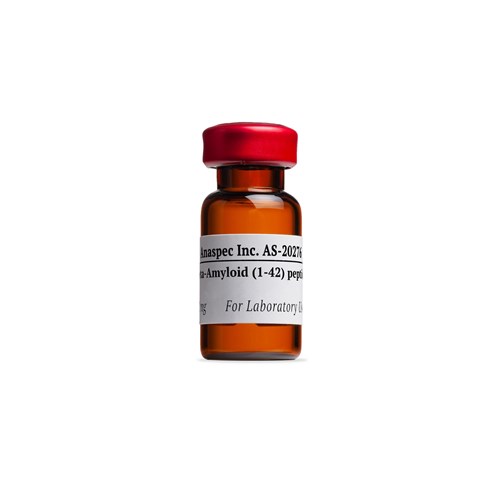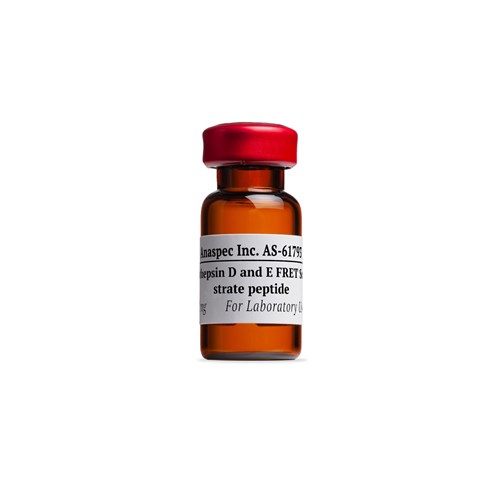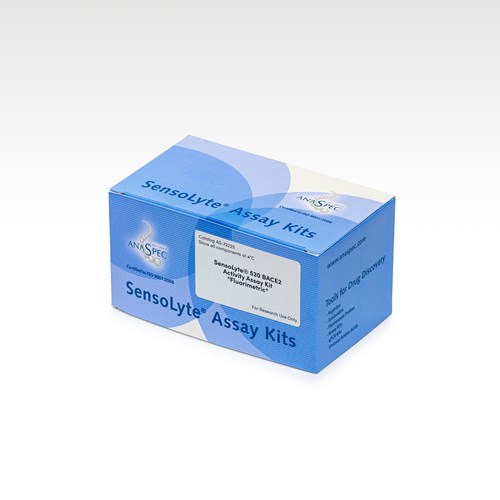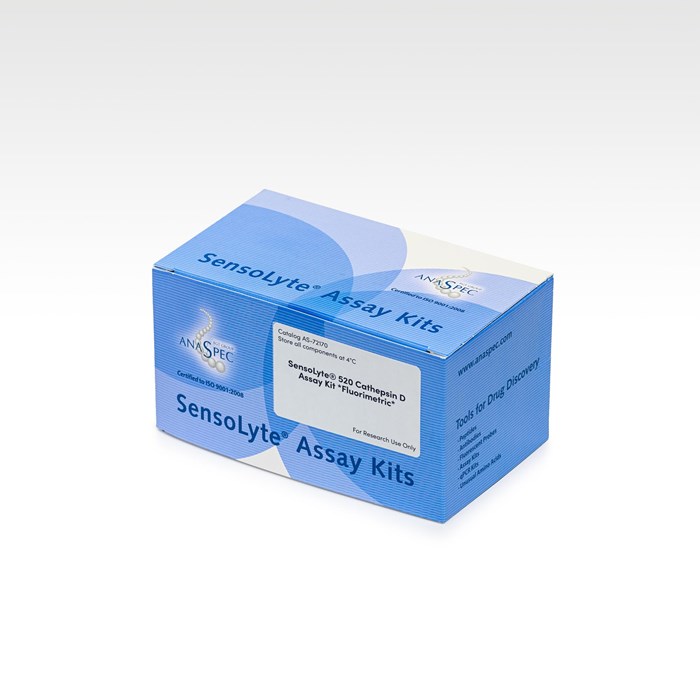SensoLyte® 520 Cathepsin D Assay Kit Fluorimetric - 1 kit
- Cat.Number : AS-72170
- Manufacturer Ref. :
-
Availability :
In stock
- Shipping conditions : Ice fees will apply
Alternative choices
Cathepsins are a class of globular lysosomal proteases, playing a vital role in mammalian cellular turnover. They degrade polypeptides and are distinguished by their substrate specificities. Cathepsin D is the lysosomal aspartic proteinase, active in intracellular protein breakdown. Cathepsin D is involved in the pathogenesis of several diseases such as breast cancer and Alzheimer disease.
The SensoLyte® 520 Cathepsin D Activity Assay Kit uses a QXL™ 520/HiLyte™ Fluor 488 labeled FRET peptide substrate for measurement of enzyme activity. In the intact FRET peptide, the fluorescence of HiLyte™ Fluor 488 is quenched by QXL™ 520. Upon cleavage of the FRET peptide by the active enzyme, the increase of fluorescence can be continuously monitored at excitation/emission = 490 nm/520 nm. The fluorescent signal from HiLyte™ Fluor 488 is stable at low pH, which is optimal for cathepsin activity. The kit can be used to detect the activity of Cathepsin D enzyme in biological samples and purified enzyme preparations.
Specifications
| Packaging | |
| Kits components |
|
|---|---|
| Chemistry | |
| UniProt number |
|
| Properties | |
| Absorbance (nm) |
|
| Emission (nm) |
|
| Storage & stability | |
| Storage Conditions |
|
| Activity | |
| Application | |
| Biomarker Target | |
| Detection Method | |
| Detection Limit |
|
| Research Area | |
| Sub-category Research Area | |
| Usage |
|
Downloads
You may also be interested in the following product(s)



SensoLyte® 520 BACE2 Activity Assay Kit Fluorimetric - 1 kit
Citations
High-Fat Diet–Induced Adipocyte Cell Death Occurs Through a Cyclophilin D Intrinsic Signaling Pathway Independent of Adipose Tissue Inflammation
Diabetes . 2011 Jul 06 ; 60 2134 | DOI : 10.2337/db10-1411
- D. Feng
Functional Heterogeneity of CD11c-positive Adipose Tissue Macrophages in Diet-induced Obese Mice
J Biol Chem . 2010 Mar 22 ; 285 15333 | DOI : 10.1074/jbc.M110.100263
- P.P. Li
Bovine cathepsin D activity under high pressure
Food Chem . 2010 May 15 ; 120 474 | DOI : https://doi.org/10.1016/j.foodchem.2009.10.040
- R. Buckow
Galloyl moieties enhance the dentin biomodification potential of plant-derived catechins
Acta Biomater . 2001 Apr 08 ; 10(7) 3288 | DOI : 10.1016/j.actbio.2014.03.036
- C.M. Vidal
Type II alveolar cell MHCII improves respiratory viral disease outcomes while exhibiting limited antigen presentation
Nature Comm . 2021 Jun 28 ; 12 3993 | DOI : https://doi.org/10.1038/s41467-021-23619-6
- SA. Toulmin
- et al
Admission Value of Serum Cathepsin D Level Can be Useful for Predicting In-Hospital Mortality in Patients with NSTEMI
Acta Cardiol Sin. . 2017 Jul 01 ; 33(4) 393 | DOI : 10.6515/ACS20170129A
- H. Kundi
- et al
Mild MPP+ exposure impairs autophagic degradation through a novel lysosomal acidity-independent mechanism
J Neurochem . 2016 Jun 16 ; 139(2) 294 | DOI : https://doi.org/10.1111/jnc.13700
- M. Miyara
- et al
ADAM30 Downregulates APP-Linked Defects Through Cathepsin D Activation in Alzheimer's Disease
EBioMedicine . 2016 Jun 09 ; 9 278 | DOI : https://doi.org/10.1016/j.ebiom.2016.06.002
- F. Letronne
- et al
Chronic toxicity evaluation of the flame retardant tris (2-butoxyethyl) phosphate (TBOEP) using Daphnia magna transcriptomic response
Chemosphere . 2015 Aug 01 ; 132 159 | DOI : https://doi.org/10.1016/j.chemosphere.2015.03.028
- M. Giraudo
- et al
Elevated vasoinhibin derived from prolactin and cathepsin D activities in sera of patients with preeclampsia
Hypertension Res . 2015 Sep 17 ; 38 899 | DOI : https://doi.org/10.1038/hr.2015.99
- R. Nakajima
- et al

